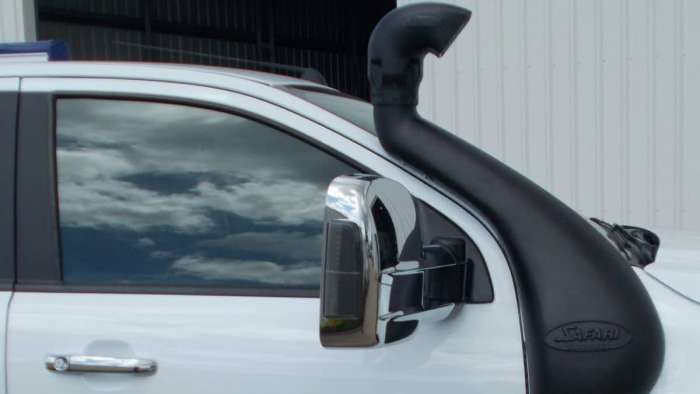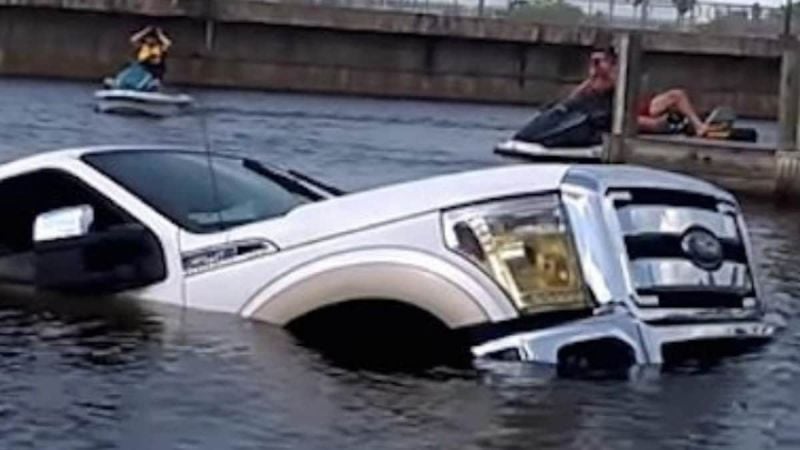No one needs to tell anyone there’s a lot of weird going on across the country. California has had two substantial fire seasons in the last couple of years. Indeed, the Weather Service a couple of days ago forecast and warned of its first “firenado” (a fire-tornado). Then there are localized storms – well maybe not so localized – that “train,” and keep on dumping inches upon inches upon feet of rain in one area. And, then there is the rapidly strengthening Hurricane Laura, which is gaining further strength, and is aiming for the same area that has already been drenched by Storm Marco.
F-150s Have Lots Going On Too
And, no one needs to tell anyone who follows or who is interested in Ford truck products that a lot is going on with Ford as well. Honestly, you would expect things to be jumping in the truck market. Despite the pandemic, trucks are one of the hottest, if not the busiest, on the market. For the record, Ford just introduced its next-gen F-150 and its 2021 Bronco lineup so indeed there’s plenty going on. Torque News' Jimmy Dinsmore discusses the meaning of the new competition that is setting up for the Ford F-150 and Bronco.
Why shouldn’t there be? Pickups can handle chores from heavy-duty construction to just taking the family out for a drive – and all the stuff in between. It’s easy for them to do this; they are versatile. If you don’t feel like upfitting your pickup to meet some need or another, you can leave it alone, and it is perfectly all right. For example, the Ford SuperCrew version of the XLT is a nicely equipped vehicle. You can tow with it, or you can do some off-roading if you would like, and that’s without any significant additions.
If you want to take on more, you can quickly put on a lift kit; add some different suspension pieces, and perhaps a new set of tires and wheels and voila, your F-150 is ready to go as an off-roader that will let you bushwhack all day with no problem.
With that said, Ford has a lot of options for you. You can set up your F-150 for off-roading if you would like. However, you aren’t limited to the F-150 line – it is the top-selling pickup in the country. You can pick one of the other Ford offerings, the Ranger or the Bronco, or one of the specialties like the Raptor or the SC, based on the F-250 Super Duty.
F-150s Have Many, Many Choices
Okay, with all of the choices you have available, you may be thinking that you are all set if the weather has turned or is turning lousy. It’s an interesting thought. Indeed, you may even think that you can ride out the lousy weather in your F-150. After all, you did have it lifted two inches, and you did have the suspension swapped out for Fox suspension parts.
All of that is well and good, but here’s the thing: you should not, I repeat, should not attempt to ride any weather that might put you in danger. Yes, it is tempting to believe that your lifted F-150 with its 33-inch Goodyear TAs, 20-inch wheels, and super ground clearance will get you out of trouble. However, in a tropical storm or a hurricane, it won’t. Indeed, it may put you in real danger as rising water engulfs your truck (it only takes six inches of water to float your pickup, despite anything you may believe. That’s why it pays to stay out of floodwaters, if you can. If you can’t, wait for rescue and don’t drive.
By now, you probably think that I have lost my marbles. Why wouldn’t an F-150 with lots of ground clearance, 4X4, and topnotch wheels and tires and suspension pieces get through floodwaters that may either come in with the lousy weather or follow it? After all, first responders have used their vehicles to get around, so why not you and your F-150?
The answer is easy. When you see a team of first responders doing a water rescue or pickup from a house, though the vehicle they are using may look like yours its not. The vehicle they are probably has two more useful features, a sealed engine compartment, and a snorkel.
And, it is quite likely that if you were to look closely at the rear bed of the first response vehicle that it will be weighted down to keep its wheels on the ground when in the water. Your F-150, on the other hand, not only probably doesn’t have the added weight, but it also doesn’t have the sealed engine bay and/or undercarriage mechanical features like a sealed driveshaft and sealed differentials.

F-150s Can Handle Some Water
Now, you can indeed drive your F-150 through floodwaters up to a point. What’s the point? On average, you should keep your truck out of water that is more than half-a-foot deep. At this point, your pickup can begin to float and put you in danger, as we have already mentioned.
Indeed, the Weather Service has a saying, “turn around; don’t drown!” It applies to either driving into or through standing or running floodwater. It is excellent advice.
F-150 Water Damage May Or May Not be Covered
By the way, if you do drive your F-150 into deep standing water and you make it through, you should remember that the water can damage your brakes (yes even disc brakes). And it may also damage other systems of your F-150, including the driveshaft (if the water gets in), your trucks oiling system that includes the oil cooler and the oil pan itself through the dipstick. Water intrusion can cause heavy-duty damage.
If floodwater does contaminate your truck’s engine, driveshaft, or other parts, you are looking at repairs that may run you upwards of $16,000 or so. And, remember that is if the repairs work. Water damage is questionable when it comes to repairs as it may cause damage that can’t be repaired due to contamination. Yes, major pieces of your vehicle can be replaced but then your repair figures may double or triple. And, then there may be damage to the interior of your vehicles. That may add another $3,000 to $5,000 to the repair price.
It is highly doubtful whether your vehicle’s insurance company will cover it.
In the final analysis, it’s better to keep your F-150 out of floodwater, so that your F-150 or Ranger or Bronco or Raptor or F-250 SC are safe and out of trouble.
Marc Stern has been an auto writer since 1971. It was a position that filled two boyhood dreams: One was that I would write, and two that I write about cars. When I took over as my newspaper's auto editor, I began a 32-year career as an automotive columnist. There isn't much on four wheels that I haven't driven or reviewed. My work has appeared in Popular Mechanics, Mechanix Illustrated, AutoWeek, SuperStock, Trailer Life, Old Cars Weekly, Special Interest Autos, and others. Today, I am the Ford F150 reporter for Torque News. I write how-to and help columns for online sites such as Fixya.com andFacebook. Most of Marc's stories can be found at Torque News Ford coverage. Check back again and search for Torque News Ford F-150 news for more F-150 truck news coverage.












Comments
Driving through flood water
Permalink
Driving through flood water is also a bad idea in residential areas because the run-off is loaded with fertilizer which often contains NH4 (Ammonia) which is crazy corrosive.